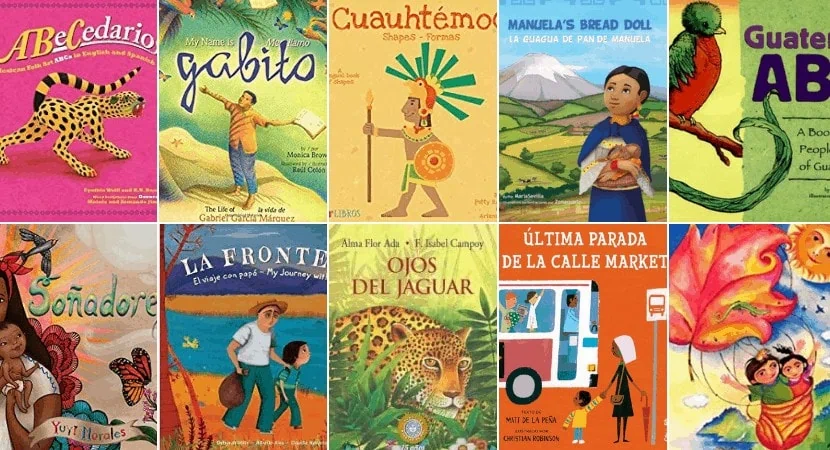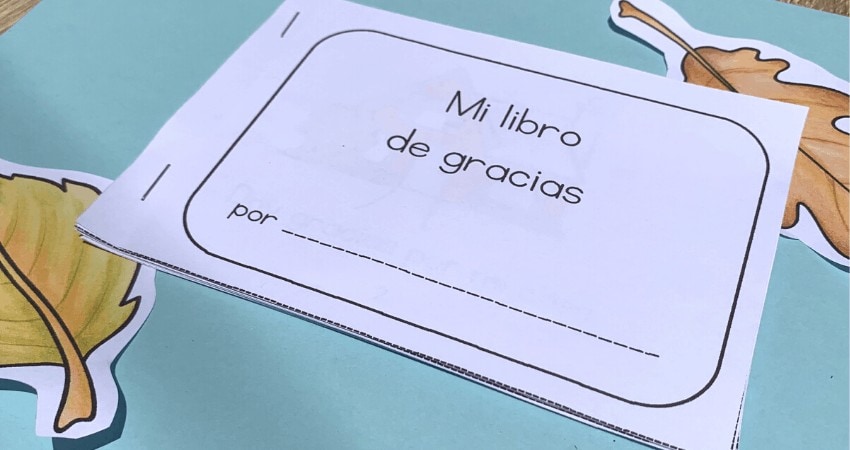Spanish Homeschooling 101: Tips for Non-native Parents
Inside: Tips for Spanish homeschooling and finding the best resources to use at home.
Are you a homeschooling parent who wants to teach Spanish to your kids, but who finds yourself struggling to get past “hola”?
If so, that’s okay—I’m here to help! My name is Anne, and I’m a fellow homeschooling mama on this language learning journey with you. Thanks to Elisabeth’s generous invitation, I’m writing today to provide you with a crash course in homeschooling Spanish. The tips that I’m sharing have been honed through my years as a language instructor at the University of Virginia—where I also earned my PhD in Spanish—and through my experience as a non-native speaking parent raising two bilingual kids.
In all this time, what I’ve discovered is that there are really only three basic things that you need to homeschool languages effectively: a basic understanding of how languages are learned; a workable study plan; and access to human support and resources.
I want to help you get these three things in place, because I believe that homeschooling Spanish is a supremely worthwhile endeavor. By teaching your kids a foreign language, not only are you giving them loads of cognitive benefits and academic advantages, but you are also teaching them some of the very things that are most important in this life: empathy, dedication, and a love of learning.
May these tips help you get off to a great start this school year—and no matter where you are on your language learning journey, know that I am rooting for you!
TIP #1: EDUCATE YOURSELF ABOUT HOW LANGUAGES ARE LEARNED.
While learning a language is possible at any age, it’s important to know that young children do learn differently than older children—and you’ll want to adjust your teaching and expectations accordingly.
If you have a child under 12, you’ll want to teach mainly through an immersion approach: providing real-life exposure to the language, reinforcing learning with multi-sensory language games, and creating opportunities for your child to practice speaking in a low-stakes environment. You may choose to use a curriculum to guide your child’s learning and help you be consistent, but the focus at this stage shouldn’t be on learning complex grammar and drilling conjugations. Instead, your goal should be to get your child using the language as quickly as possible and feel confident doing so, even if his/her language skills are quite basic. If you need a little structure to help you get there, I highly recommend Elisabeth’s excellent Spanish unit studies—they work great for kids in this age group!
If you have older children—say, middle school-aged or above—all of the above strategies apply, but they can also benefit from direct grammar instruction. Although you may have heard that young children learn languages best, older children can actually learn languages more efficiently, because they can draw parallels between their native language and the one they’re trying to learn.
You can choose a curriculum that takes advantage of this natural tendency, but you should also seek out opportunities for them to interact with native speakers of the language—be it through online Spanish classes, online conversation practice, or be interacting with Spanish-speaker in your local community. Middle school and high school-aged children in particular may be reticent to practice speaking—since learning any language can be a bit awkward—so although they may resist, it’s important to keep seeking out opportunities to develop this skill.
TIP #2: CHOOSE AN APPROPRIATE CURRICULUM AND PLAN TO USE IT CONSISTENTLY.
We are lucky to live in an age with an abundance of resources for teaching Spanish at home. No matter the age of your children, the size of your family, or your chosen homeschool philosophy, you can find a Spanish curriculum to fit your needs—take a look at my homeschool Spanish curriculum round-up to find one that will work for you .
Once you have that curriculum in hand, consistency is key. Short, daily practice sessions are much more effective for language learning than twice weekly lessons—and the more practice, the better. For younger students, you can help yourself be consistent by pegging your Spanish practice to another daily activity—perhaps including it in your Morning Time schedule, or dedicating your afternoon snack time to Spanish practice, followed up by a special Netflix viewing in Spanish.
If you have older students, you can plan regular formal lessons into your homeschool day, and I would recommend scheduling supplemental practice sessions as well. These don’t have to be teeth-pulling exercises or activities that require your participation; instead, they can include watching sports in Spanish, listening to audiobooks in Spanish, or playing on a gamified language app. Since motivation is really important for language learning, try to match that extra practice to your child’s other interests or activities, if at all possible.
And one more thing: while this may be an unpopular opinion, I feel obliged to note that not every language learning tool necessarily works as a homeschool curriculum. Rosetta Stone, Duolingo, and Mango Languages all have their place, but none of them were designed for children, and all lack the comprehensive approach that young language learners need to reach proficiency. For those reasons, although I recommend Duolingo and Mango Languages as supplemental tools, I would not rely on any of those programs as your primary curriculum, especially for a child under 14.
3.) SURROUND YOURSELF WITH RESOURCES AND SUPPORT.
No matter whether you are learning Spanish alongside your children or are a native speaker yourself, no mama should try Spanish homeschooling alone! As a non-native speaker myself, I deeply value our Spanish-speaking friends and neighbors, who share both their language and their lives with us, supporting our entire family on our quest to raise bilingual kids.
With a bit of intention and planning, you too can find ways to surround your child with authentic Spanish-language resources and find others who can partner with you on your family’s language learning journey.
Here are a few ways that we’ve done that in our own family and which you might find useful:
- Look for Spanish-language story times at your local library and get to know the leaders and other families there.
- Ask your librarian to give you a quick tour of your library’s Spanish-language collection—and grab some books for Spanish read-alouds!
- Look for Spanish-language playdates in your community on sites like Meetup.com or through local Facebook groups.
- Reach out to other homeschool families studying Spanish and plan a conversation playdate or Spanish Poetry Teatime together.
- Volunteer with a church ministry or community organization that serves Spanish speakers. This can naturally lead to relationships where your children can practice their Spanish!
Of course, these aren’t things that you have to do all at once. It might make sense to tackle one in the fall and add another one on in the spring, or just to keep them in mind for future use. If something doesn’t work, try a new activity: the key is to think creatively about how to get your kids using their Spanish in the real-world, because if they can see how useful—and fun!—it is, they are much more likely to be successful in learning the language.
And in case those three tips weren’t enough, here’s one more: think of Spanish like an elephant. After all, as the saying goes, if you want to eat an elephant, you have to do it bite-by-bite. Learning Spanish is no different. What can you do this day, this week, to support your children’s Spanish learning? Focus on creating those good habits, and don’t stress about the rest—just be faithful to the process. You’ve got this!
Anne Guarnera is a bilingual homeschooling mom of two with a PhD in Spanish from the University of Virginia. Combining her experience as a language teacher and a bilingual parent, she writes at Language Learning At Home to equip other homeschooling families to study foreign languages successfully.
Do you have any Spanish homeschooling resources or tips to add? Let us know in the comments below!
Like it? Pin it!
SPANISH HOMESCHOOLING TIPS







